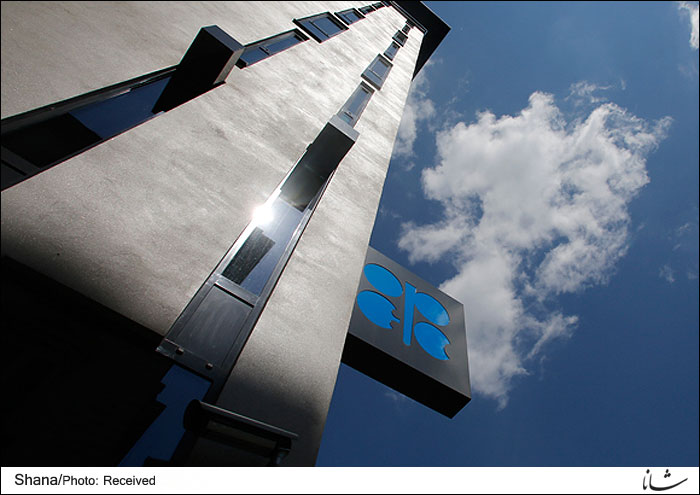Estimates show that the 8.3 mb/d crude oil output by Asian and Pacific suppliers will completely die out, and the 31 mb/d produced by Europe, Eurasia and Africa will diminish dramatically by the coming decades.

The developments in the Middle East, especially the recent unrests in certain oil-rich Persian Gulf states, can be viewed from the framework of oil and the future of the energy market.
By 2012, the Middle East region enjoyed 48.4 percent of the world's 1,669 billion barrels of proven oil reserves, studies show.
After the Middle East were the central and South America with 19.68%, North America with 13.2%, Europe and Eurasia with 8.44%, Africa with 7.81% and Asian and the Pacific with 2.49% of world reserves.
Adding to this the oil sands in Canada with 167.8 billion barrels of in-place petroleum reserves, North American and Canadian oil sands make up 21.13% of world reserves which is still less than that of the Middle East with 43.97% of the total reserves.
A glance at the crude oil output of various world regions shows that the Middle East's crude oil output was only 32.8% of the total production in the world with 86.152 million barrels in 2012. The region offered only 28.3 mb/d at its most to world markets.
Of the produced volume in the Middle East, more than 21.4 mb/d (almost 76%) were supplied by Iran (3.7 mb/d), Iraq (3.1 mb/d), Kuwait (3.1 mb/d) and Saudi Arabia (11.5 mb/d).
After the Middle East were Europe and Eurasia with 17.2 mb/d, North American and Canadian Sand with 15.6 mb/d, Africa with 9.4 mb/d, Asia and the Pacific with 8.3 mb/d and Central American with 7.3 mb/d.
Given the 2012 production rate, the approximate number of the remaining years for production for Saudi Arabia and Iraq will be 63 and 132, respectively, while the number of the remaining years will be 117 for Iran.
Should the world crude oil output, regardless of shale productions, remains intact and no new reserves are located in the world, the world's oil reserves including Canada oil sands will exhaust in less than 58 years.
Regarding the average production of 86.152 mb/d in the world and the overall reserves of 1,836.8 bb (including Canada's oil sands) in 2012, crude oil are expected to dry up in most world regions by the next 58 years.
As major suppliers are drifted away in domestic and international markets, the demand for crude oil naturally prompts the remaining producers to offer more oil to satisfy the market.
Assuming that the supply of crude oil will not change noticeably by major producers, and the volume of world reserves remains unchanged, and supposing that suppliers drifted away because of their dried reserves will not become buyers of petroleum products, South and Central America with the production ceiling of 7.4 mb/d, the Middle East with 28.2 mb/d, and North American with 15.5 mb/d will maintain their supplies by the next 122, 778 and 68 years, respectively.
However, such assumptions seem unreasonable because oil has to be delivered to all regions in need of the product (no matter if they were once suppliers themselves), which puts double or triple pressure on the remaining suppliers. This can by itself tap the prices and at the same time shorten the life of oil wells in the producing regions.
The decline in crude oil supply in the future shows that in less than the next 13 years, one should expect to see the removal of 8.3 mb/d of Asian and Pacific oil from the market, while the 17.2 mb/d output of European and Eurasian suppliers will reduce to close to zero by the next 22 years. The same will be the case for Africa if the current conditions are to remain unchanged and the 9.4 mb/d production of African suppliers will reach zero within the coming few years.
In simpler words, over 35 mb/d of crude oil will fade away from domestic and international markets in Europe, Eurasia, Asia, the Pacific and Africa. This is while the reduction will have to be compensated by producers in other regions which will raise the prices in an unbelievable fashion.
In the next 10 years, unconventional productions, like shale, will be much more economically justifiable due to the severe depletion of vast oil reserves and the inevitable price spikes by major conventional producers. Moreover, just like natural gas, shale production will be used as a lever to control prices and the market.
To sum, the decline rate of crude oil wells in the world, the hike of natural gas output, shales and alternative energies can reduce the demand for oil to some extent; however, the reduction falls much shorter than being able to rule out an imminent war over resources in the Middle East, and prevent military forces by world industrial and economic powers to be deployed in the region in areas mostly close to Iran, Iraq, Saudi Arabia and Kuwait. In other words, industrial countries will keep making up pretexts to stay in the region to check on the prices.



Your Comment